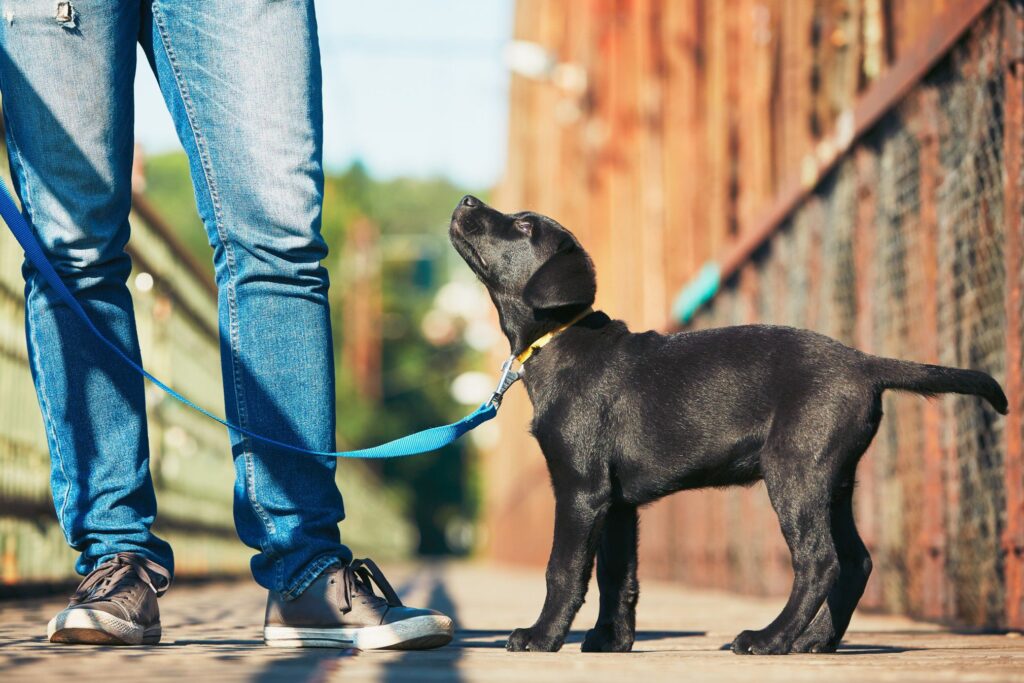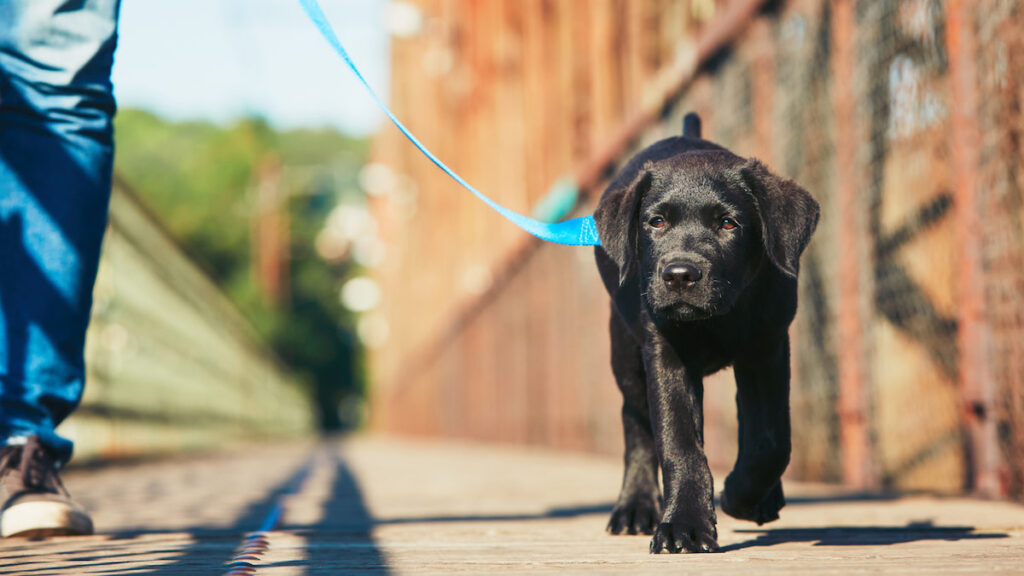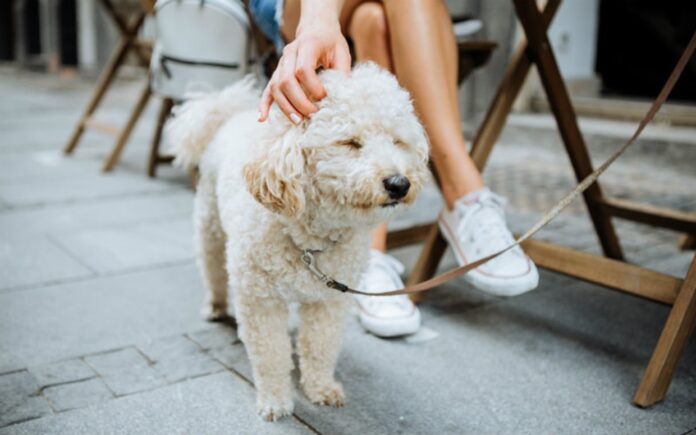Understanding Leash Reactivity in Dogs
As a passionate dog owner, I’ve witnessed firsthand the challenges that come with leash reactivity. This behavioral issue, where dogs display an exaggerated response to specific triggers while on a leash, can be frustrating for both the dog and the owner. However, through the power of positive reinforcement training, I’ve seen remarkable transformations in even the most reactive canines.
Leash reactivity can manifest in various ways, from excessive barking and lunging to growling and snapping. These behaviors are often a result of fear, anxiety, or a lack of proper socialization. While it may seem daunting, with the right approach, we can help our furry companions overcome these challenges and develop a more confident and balanced temperament.
READ ALSO : 10 Best Dog Breeds for First-Time Owners with Kids: The Ultimate Guide
The Importance of Positive Reinforcement Training
At the heart of my approach to addressing leash reactivity is the principles of positive reinforcement training. This method, which focuses on rewarding desired behaviors rather than punishing undesirable ones, has been proven to be the most effective and humane way to modify a dog’s behavior.
By using positive reinforcement, we can build a strong bond with our dogs, increase their trust and confidence, and ultimately empower them to make better choices. This approach not only helps to manage leash reactivity but also fosters a deeper connection between the dog and the owner, leading to a more harmonious relationship.
Basic Principles of Positive Reinforcement Training
The foundation of positive reinforcement training lies in the following principles:
- Reward-Based Approach: Identifying and consistently rewarding the behaviors we want to see more of, such as calmness, focus, and appropriate responses to triggers.
- Gradual Exposure: Slowly and carefully exposing the dog Positive Reinforcement Training to their triggers in a controlled environment, ensuring they remain calm and comfortable.
- Desensitization and Counter-Conditioning: Pairing the trigger with something positive, like a treat or a favorite toy, to change the dog’s emotional response from fear or anxiety to a positive one.
- Patience and Consistency: Recognizing that behavior modification takes time and persistence, and being willing to put in the necessary effort to see lasting results.
Identifying Triggers and Thresholds in Leash Reactive Dogs
The first step in addressing leash reactivity is to identify the specific triggers that elicit the unwanted behavior. These triggers can range from other dogs and people to loud noises or certain objects. It’s essential to understand the dog’s individual thresholds, the point at which they become overwhelmed and react.
By carefully observing our dogs and keeping detailed records, we can pinpoint these triggers and thresholds, allowing us to tailor our training approach to their unique needs. This knowledge will be crucial in the next phase of our journey.
Techniques for Managing Leash Reactive Behavior

While we work on modifying the underlying behavior through positive reinforcement training, it’s important to have strategies in place to manage the dog’s reactivity in the meantime. Some effective techniques include:
- Desensitization and Counter-Conditioning: Gradually exposing the dog to their triggers while pairing the experience with something positive, such as treats or praise.
- Redirection and Distraction: Diverting the dog’s attention away from the trigger by engaging them in a different activity, like a simple obedience command or a fun game.
- Threshold Management: Keeping the dog’s distance from their triggers at a level where they remain calm and focused, gradually decreasing the distance over time.
- Environmental Management: Avoiding or minimizing exposure to known triggers, such as by taking a different route or using a head halter or no-pull harness to maintain control.
Step-by-Step Guide to Positive Reinforcement Training for Leash Reactivity
- Establish a Strong Foundation: Begin with basic obedience training, focusing on commands like “sit,” “stay,” and “focus.” This will provide a solid foundation for more advanced training.
- Identify Triggers and Thresholds: Carefully observe your dog’s behavior and note the specific triggers that elicit a reactive response, as well as the distance at which they become overwhelmed.
- Implement Desensitization and Counter-Conditioning: Slowly and gradually expose your dog Positive Reinforcement Training to their triggers, starting at a distance where they remain calm. Pair the exposure with high-value rewards, such as their favorite treats or a game of tug.
- Teach Alternate Behaviors: Train your dog to perform an alternate, incompatible behavior (such as “sit” or “look at me”) when they encounter a trigger. Reward them for this behavior, reinforcing the new, more desirable response.
- Practice, Practice, Practice: Consistency is key. Regularly practice your training exercises in a variety of environments, gradually increasing the difficulty and exposure to triggers.
- Celebrate Small Victories: Recognize and reward even the smallest improvements in your dog’s behavior. This positive reinforcement will help build their confidence and reinforce the desired behaviors.
Common Mistakes to Avoid in Leash Reactivity Training
- Rushing the Process: Trying to progress too quickly or exposing your dog to triggers they are not yet ready to handle can setback the training and increase their anxiety.
- Inconsistent Reinforcement: Failing to consistently reward desired behaviors or inadvertently rewarding undesirable ones can confuse your dog and undermine the training.
- Relying on Punishment: Using punishment-based methods, such as yelling, jerking the leash, or using aversive training tools, can damage the dog-owner relationship and exacerbate the problem.
- Lack of Environmental Management: Neglecting to manage the dog’s environment and exposure to triggers can make it more difficult to achieve progress.
- Giving Up Too Soon: Behavior modification takes time and patience. Persevering through setbacks and continuing to work with your dog is essential for long-term success.
Training Tools and Equipment for Leash Reactivity

While positive reinforcement is the foundation of our training approach, there are some specialized tools and equipment that can be helpful in managing leash reactivity:
- Head Halters: These devices gently guide the dog’s head, allowing for better control and redirection during reactive episodes.
- No-Pull Harnesses: These harnesses are designed to discourage pulling, making it easier to maintain control and redirect the dog’s attention.
- Treats and Rewards: High-value, irresistible treats are essential for reinforcing desired behaviors. Experiment to find your dog’s favorites.
- Clickers: The distinct “click” sound can help mark the exact moment a behavior is performed, providing clear feedback to the dog.
- Muzzles: In some cases, a properly fitted muzzle can provide an extra layer of safety during training and when encountering triggers.
Success Stories: Real-Life Examples of Dogs Overcoming Leash Reactivity
Throughout my journey as a positive reinforcement trainer, I’ve had the privilege of witnessing some truly remarkable transformations in dogs struggling with leash reactivity. One of my most inspiring success stories is that of Buddy, (Positive Reinforcement Training) a rescue dog who was initially so fearful and reactive that he would lunge and bark at the sight of other dogs or people.
Through a patient and consistent training regimen, Buddy’s owners were able to gradually desensitize him to his triggers and teach him alternate, calmer behaviors. Over time, Buddy’s confidence grew, and he became able to calmly greet other dogs and people without the overwhelming need to react. His owners report that their walks are now a joy, and they are grateful for the positive reinforcement techniques that transformed their beloved companion.
Another client, Sarah, had struggled for years with her dog, Bella, who was highly reactive on the leash. After implementing the strategies we discussed, Sarah saw a dramatic improvement in Bella’s behavior. She shared, “I never thought Bella would be able to walk calmly past other dogs, but with the positive reinforcement training, she has become so much more relaxed and confident. It’s been life-changing for both of us.”
These stories are a testament to the power of positive reinforcement training and the resilience of our canine companions. With patience, consistency, and a deep understanding of our dogs’ needs, we can empower them to overcome their challenges and live their best lives.
Conclusion: Empowering Your Dog Through Positive Reinforcement Training
Leash reactivity can be a daunting challenge, but through the transformative power of positive reinforcement training, we can help our furry friends overcome their fears and develop a more balanced and confident temperament. By understanding their triggers, implementing effective management strategies, and consistently reinforcing desired behaviors, we can forge a stronger bond with our dogs and empower them to thrive.If you’re ready to embark on your own journey to address your dog’s leash reactivity, I encourage you to reach out to me for a consultation. Together, we can create a customized training plan that will set your canine companion up for success. Let’s work hand-in-paw to overcome this challenge and unlock your dog’s full potential.


